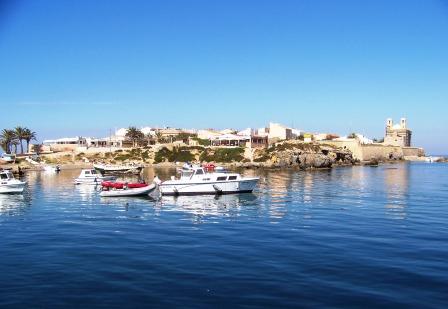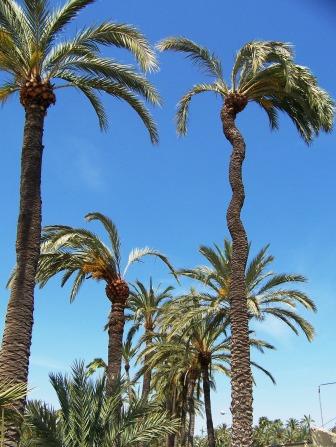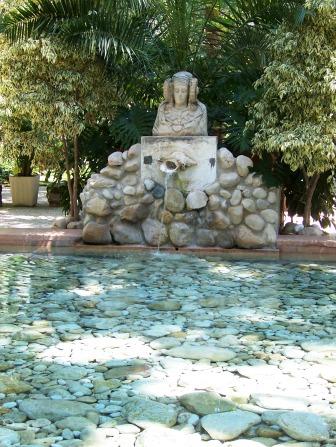Elche
and the Isla Tabarca
From
Granada we drove northeast toward Valencia. It was a long drive, so we broke
it up
by spending one night about halfway. That was the region of Elche and the Isla
Tabarca.

Our first detour was through this village of Guadix. It is a so-called "troglodyte"
village,
meaning that most of the homes are carved into the sides of the hills. In some
part of the village
all that can be seen of the homes are the doors, windows, and chimneys--the
rest is hillside.


The Isla Tabarca is
located about a half-hour ferry ride from the Spanish coast. Since the coast
is now all very overdeveloped with tourism, we thought it would be fun to stay
instead on
the island--especially since the island is entirely a pedestrian one, so no
vehicles are permitted.


The island is quiet--but
it was hot and dusty when we were there. It has no natural source of water,
so all water must
be brought to the island. It is shaped like a figure eight, and only half is
populated--the other half is a bird sanctuary.

We had a terrific
paella dinner at an open-air restaurant, sitting next to a large--and
entertaining!--group of young people there for a combined bachelor and bachelorette
party.
Back on the
mainland the next day, we stopped in Elche, also called Elx in the Catalan
language of northeastern Spain. It is said to be home to the world's
largest date palm grove--over three hundred thousand trees, the first
of which were planted thousands of years ago by the Phoenicians, who,
like the ancient Greeks, established trading posts on the coasts of
what is now Spain.

This was an unusually
shaped palm tree!

This is a replica
of the "Lady of Elche," a seven-thousand-year-old statue found here.

We stopped for a brief
tour of a botanical garden known as the Priest's Garden
because it had been started as a gardening hobby by the local parish priest.


The Priest's Garden
includes this rare, eight-branched
palm tree (now supported by metal braces so it won't collapse,
but actually naturally formed from one palm tree).
Close this page or click here to go to
the next page.










